Marbella the Costa del Sol holiday destination of the rich and famous in Andalucia, southern Spain and the Andalusian city with the best development of the general welfare and the highest quality of life.
By Nick Nutter | Updated 15 Sep 2022 | Málaga | Villages |
Login to add to YOUR Favourites or Read Later
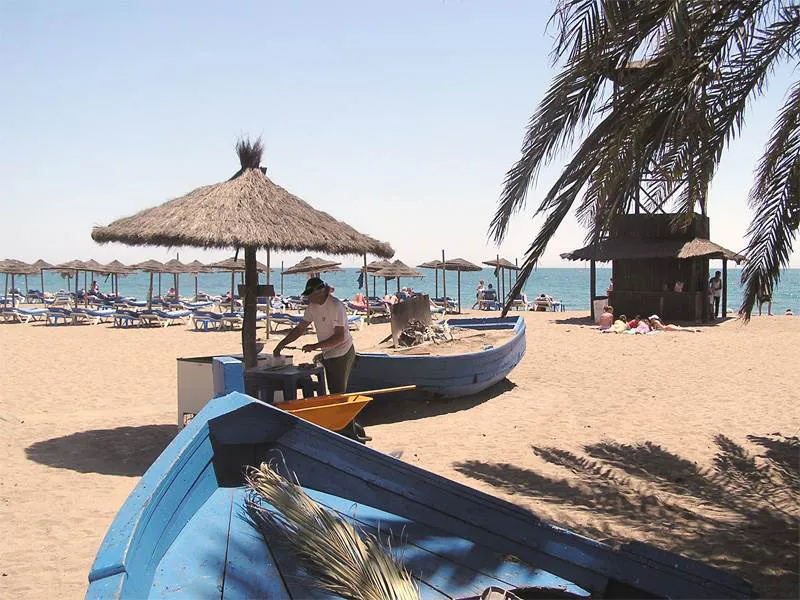
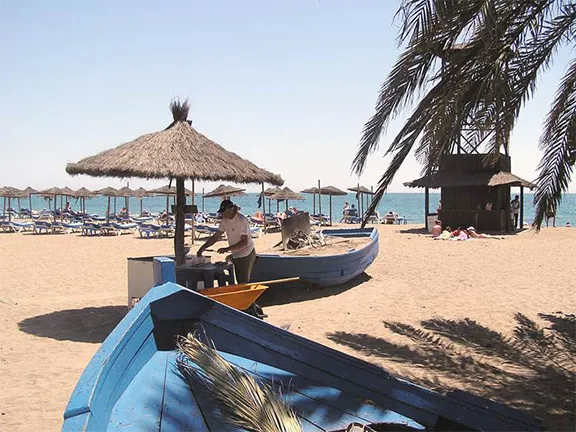
The Beach at Marbella
Nestled in the shadow of four mountains, Lastonaf (1215 metres), Cruz de Juanar (1165 metres) to the north west and north, and two somewhat lower summits, Majales (464 metres) and an unnamed peak (508 metres) that shelter the city from the north east, Marbella basks in the sun both summer and winter. Offering further protection from the harsh westerly wind known as the poniente are the mountains west of the city, La Concha and a little further back, the Sierra Bermeja.
Sunshine is not the only attraction. Unlike towns east of Malaga such as Rincon de la Victoria, Torre del Mar, Nerja and Almunecar that enjoy a similar aspect, Marbella does not actually cling to the foothills, it sits on an admittedly thin, between one half a kilometre and two kilometres wide, fertile, coastal plain that formed as a result of the erosion of surrounding hills and mountains.
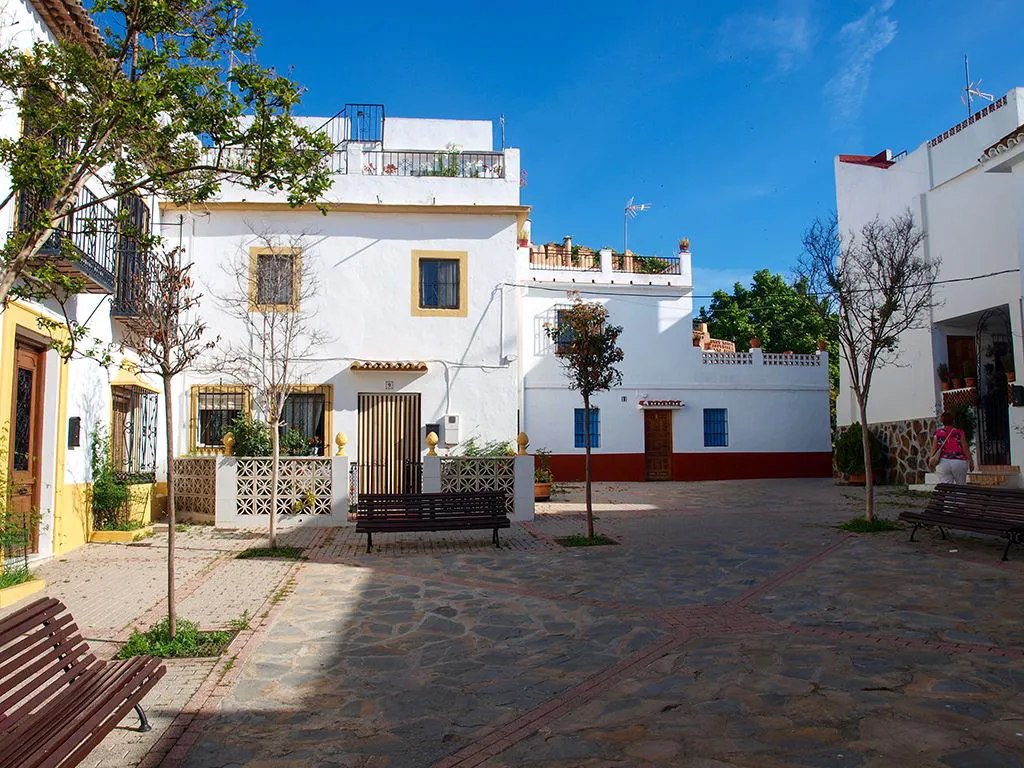
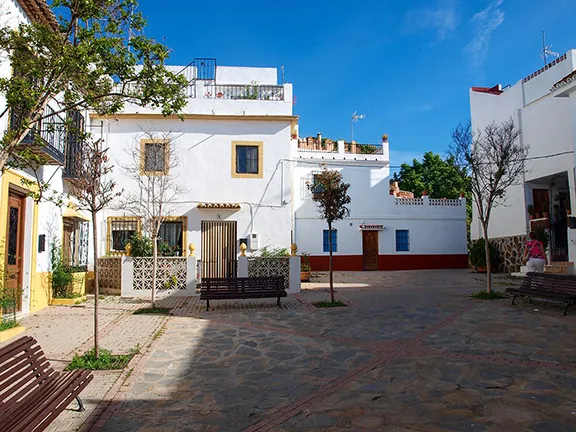
Marbella has not always been the throbbing metropolis it now is. In 1950 it was a small village with 10,000 residents. Its rise to fame and fortune has all happened in the last sixty-five years. Today its resident population is about 150,000 with a summer peak of 500,000.
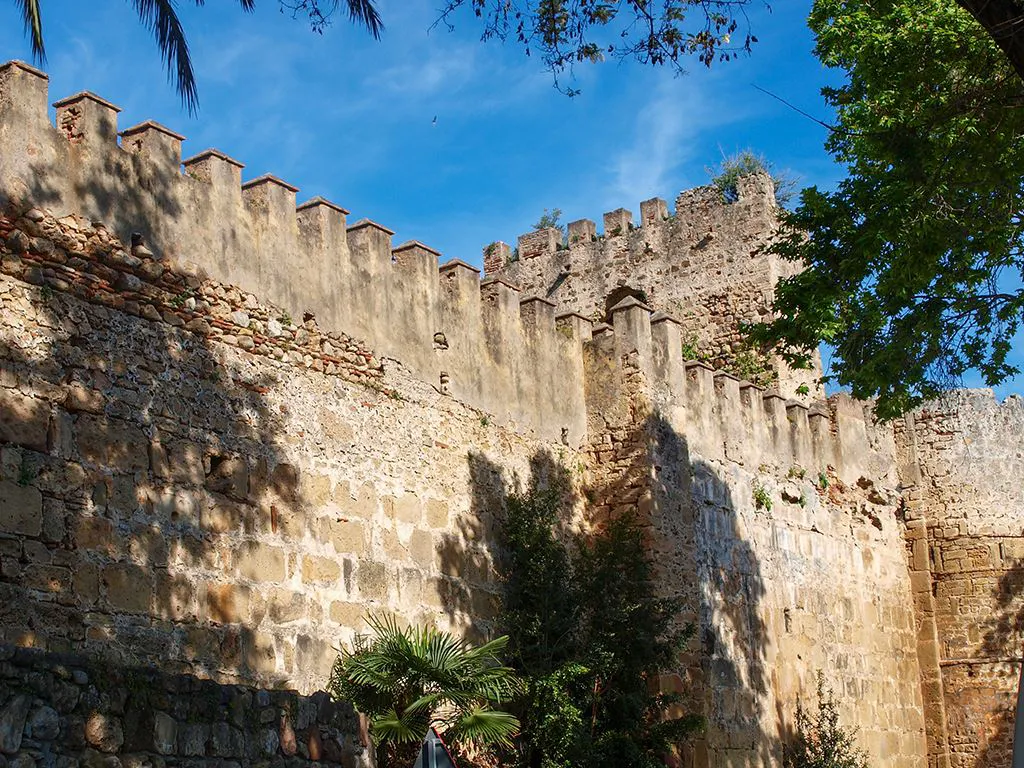
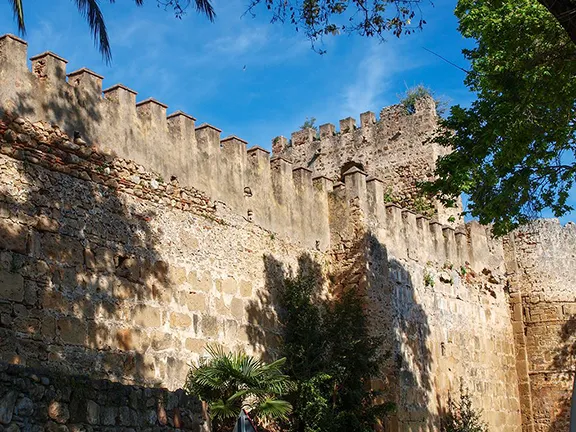
Roman and Muslim Walls Marbella
The area was no doubt populated by hunter gatherers and later Neolithic people but of them we have no archaeological record. The Phoenicians and Carthaginians also seemed to leave no trace of their passing. Even the Romans did not leave much, the remains of a bridge in the grounds of the Hotel Puente Romano midway between Puerto Banus and Marbella, a few scattered villas, Villa Romana to the far west of the city, almost in Puerto Banus, and Vega del Mar further west in San Pedro de Alcantara, a bath house at Guadalmina and tantalising glimpses in the old town itself.
The later Moorish town walls are partly built on Roman foundations; in places the demarcation is quite clear and Roman foundations have been discovered in the old town. Some of the building undertaken during Moorish times re-uses Roman masonry and when the Moors arrived in 711 AD the place was called Salduba or City of Salt, further evidence of a Roman presence.
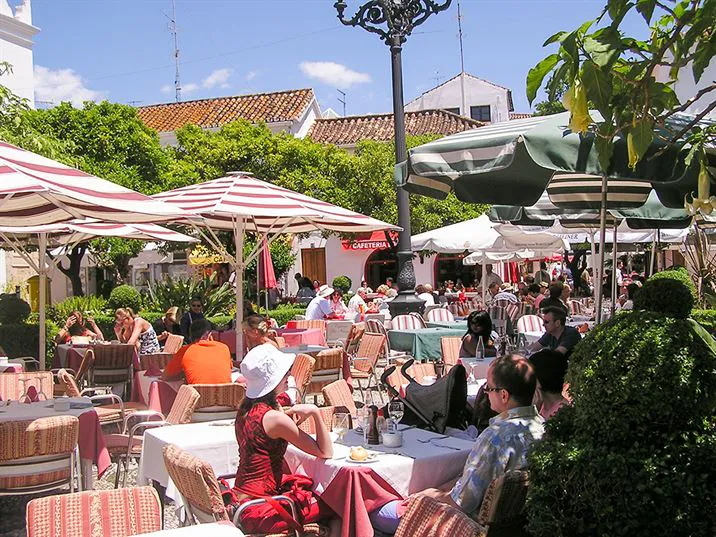
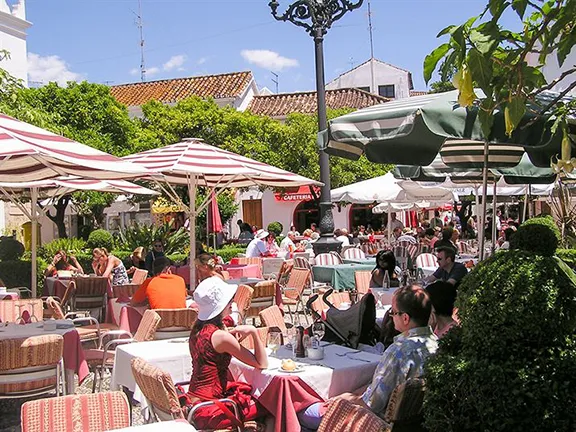
Just outside the city walls is the social hub of the city, Plaza de los Naranjos, Orange Square, its buildings date back to the 16th Century, after the re-conquest. from here you can walk down Chinchillas and immediately sharp left up through the old walls into the old town. Although not immediately obvious due to the houses and other buildings being cramped together, the walls surrounding this oldest part of the city are still largely intact. The original layout that dates from before the 15th Century has been retained and you get a real idea of the environment in which people lived in those times, and still do I suppose.
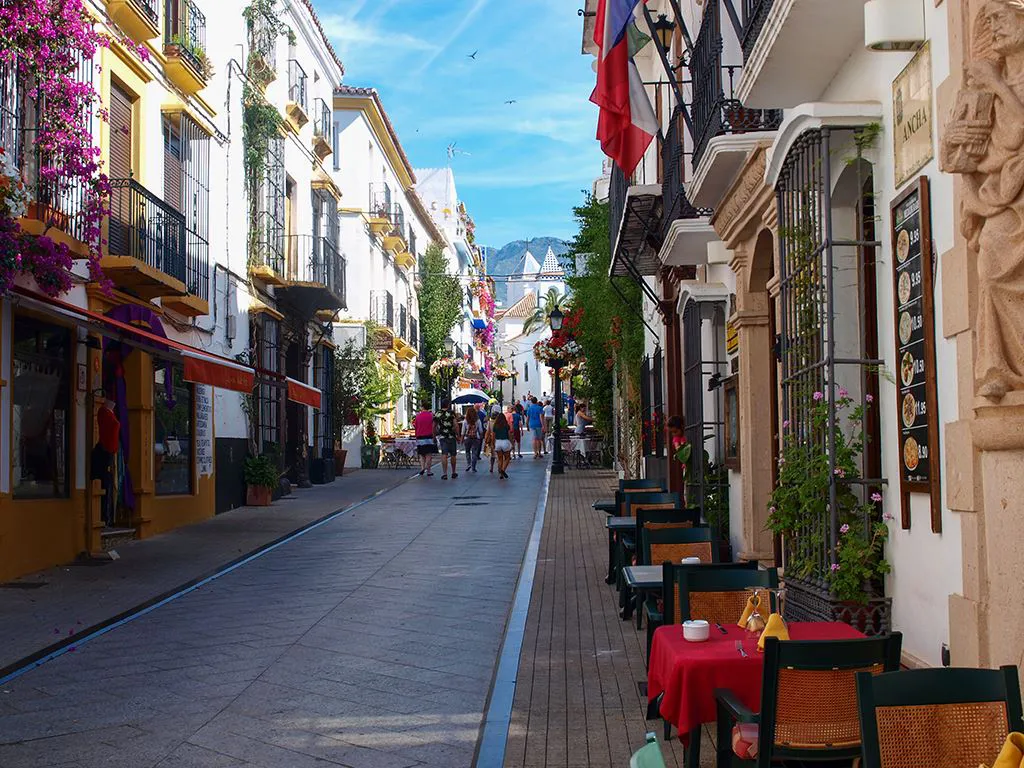
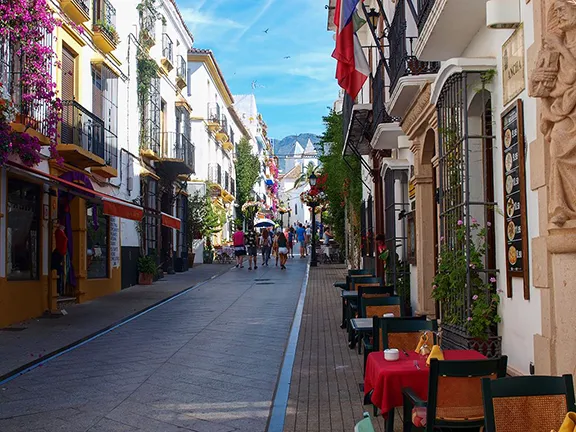
Shopping Area
Beyond the precincts of the old town the narrow streets and squares brilliantly colourful with flowers become increasingly younger. This area has restaurants, bodegas and boutique shops tucked away in alleys such that you wonder how customers ever find them. I had a vision of passing trade being primarily the lost and confused entering for directions to somewhere else and purchasing out of guilt until I saw some of the prices so it must be a case of ‘being in the know’. Fascinating in any case.
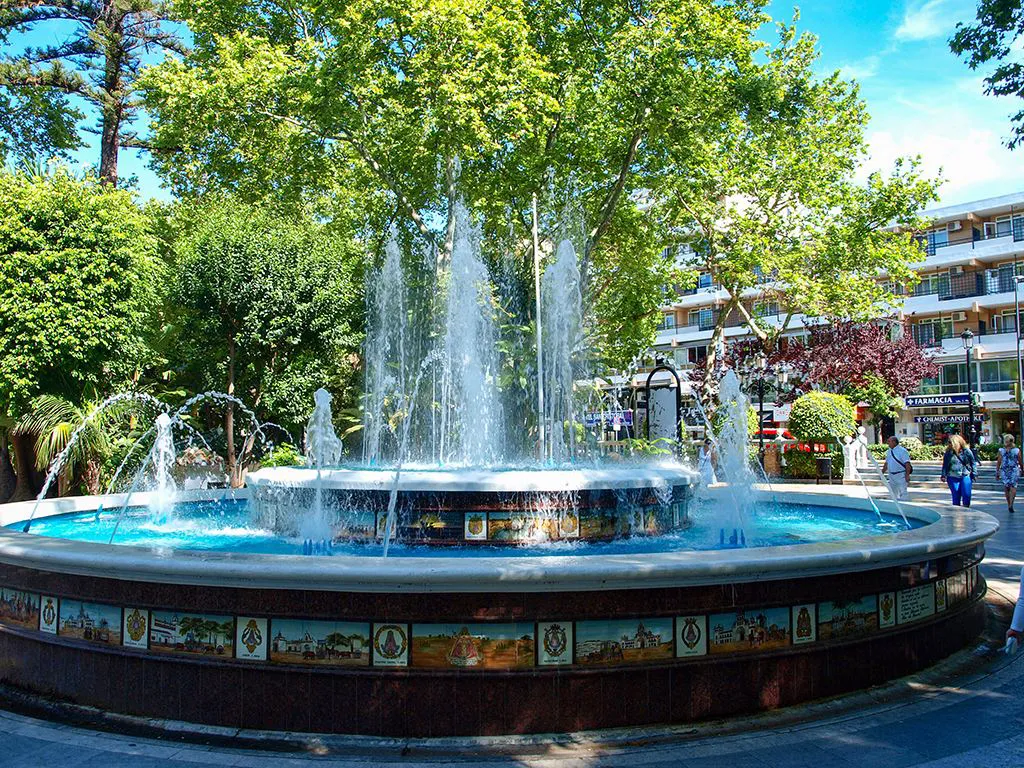
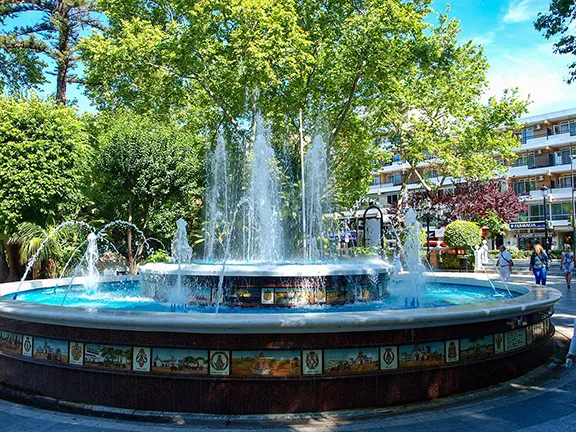
Fountain on the Ensache Historico
Sharply divided from the charming side of town by the four lane main road is the Historic Extension or Ensache Historico. There is a small botanical garden offering shade on the hottest days and a park with fountains.
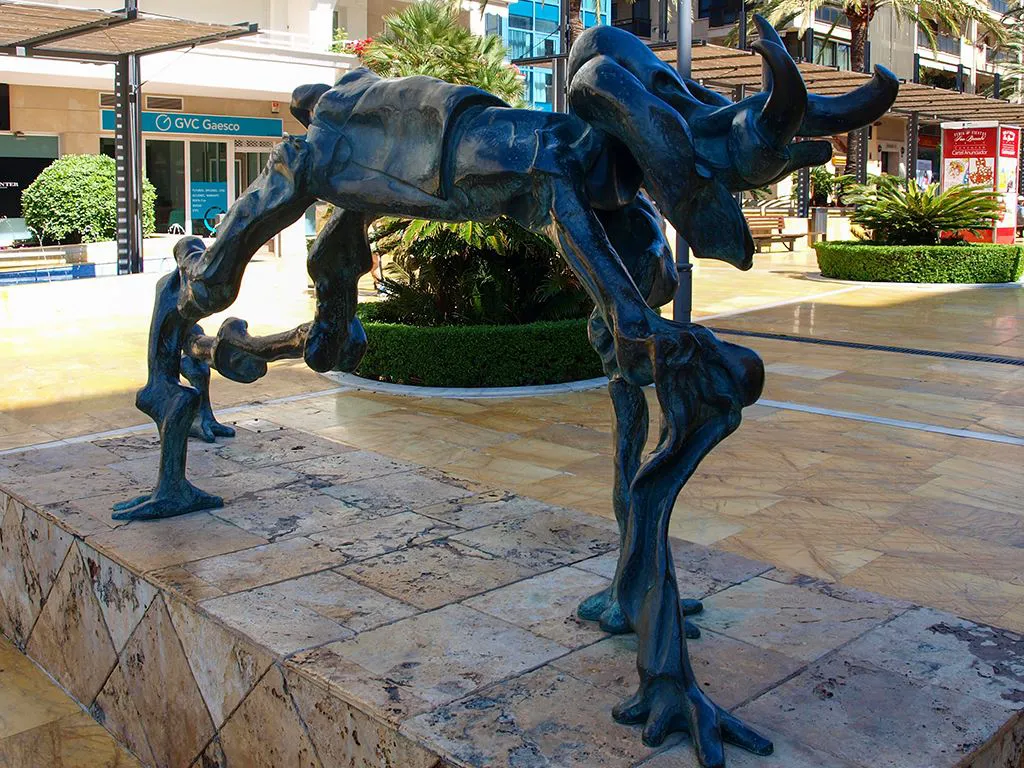
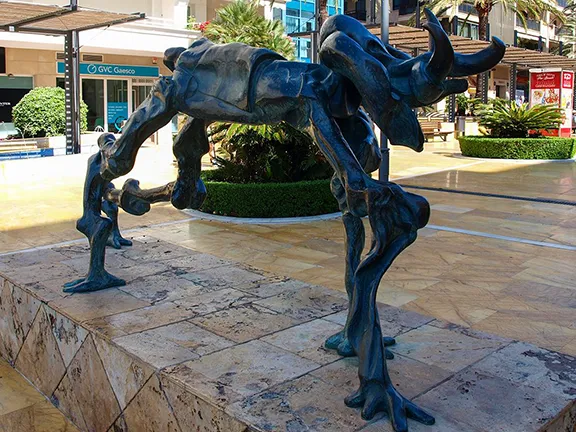
Salvador Dali Elephant
Between this and the shore is a large square that contains ten sculptures by Salvador Dali. At the seaward end of this square is a Champagne and Oyster Bar. There is something sinful about sitting there with an ice bucket, bottle of Moet and a dozen oysters but who cares, sinful but nice.
Which brings us neatly to 1954 when Prince Alfonso of Hohenlohe-Langenburg purchased an estate and opened it as the Marbella Club. He marketed it to the rich and famous, royalty, film stars, politicians, anybody really so long as they had lots of dosh or an expense account. For the next fifty years Marbella will not look back. It rapidly became a jet set destination.
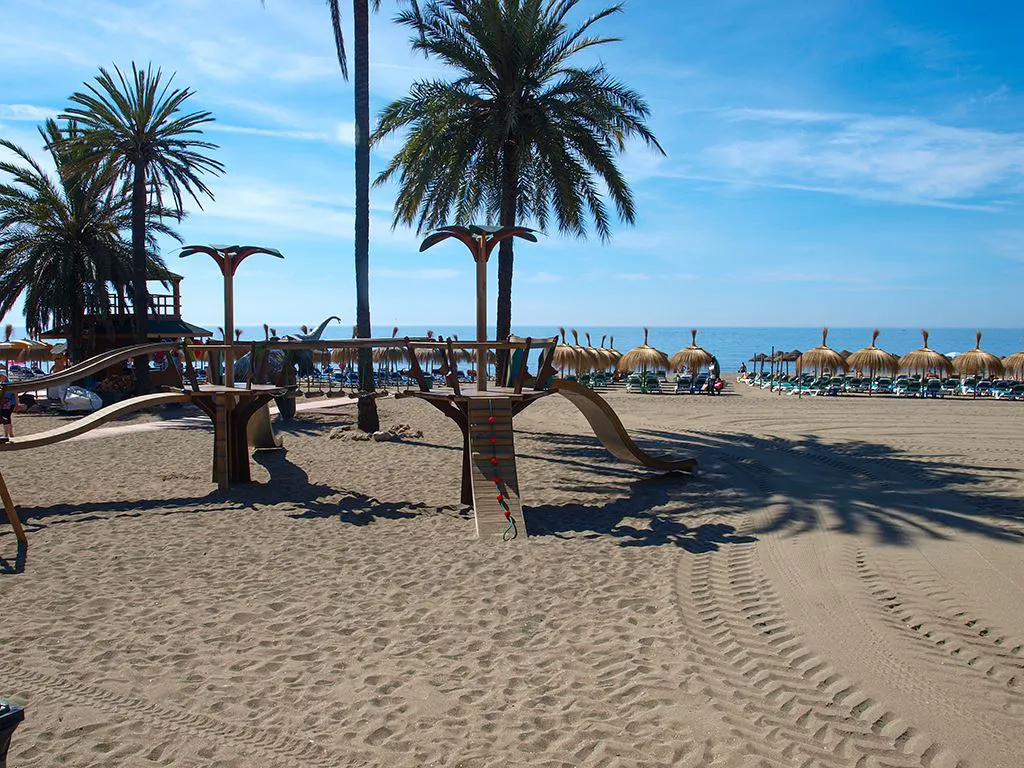

Golden Mile Marbella
So we come to the shore, Marbella’s Golden Mile, actually 4 miles long, running all the way to the playground of the rich and famous, Puerto Banus. Landmark hotels like the Melia Don Pepe, Hotel Marbella Club (where you can pay 14 Euros for a one Oxford sausage breakfast) and the Puente Romano Hotel are interspersed with more modest eating establishments and the Palace of King Fahd. King Fahd and his entourage invested heavily in Marbella to the tune of 5 million Euros per day when they were on vacation. Together with the exclusive villas this whole strip has been built since 1960. In 1966 Prince Alfonso again made the headlines.
So successful was the Marbella Club concept that in 1966 Alfonso shipped in a Beverley Hills architect, enlisted the help of the Banus family, who just happened to be personal friends with Franco, and built Puerto Banus.
The sky must have seemed the limit for Marbella. Unfortunately so much cash in one place attracted the wrong sort of person and as we entered the 21st Century a number of cases of corruption were brought against leading politicians and business people. A joke at the time insisted that Alhaurin de la Torre had more mayors than any other place in Spain; they were all lodged in the Centro Penitenciario there. Today the term ‘Mabellan urbanism’ is synonymous with Governmental corruption.
What of today? Marbella is still in debt but it has one thing in its favour, people with money still want to own property there and are still prepared to go there to spend. In other words the city has an income stream that more than covers its expenditure. This is beginning to show with improvements to roads, streets and parks and more businesses investing in their own infrastructure. In 2008 a study by the Institute of Statistics of Andalusia found Marbella was the Andalusian city with the best development of the general welfare and the highest quality of life. According to the results of the study, Marbella ranks highest in the number of private clinics, sports facilities and private schools and, not part of the study, one fine oyster bar.